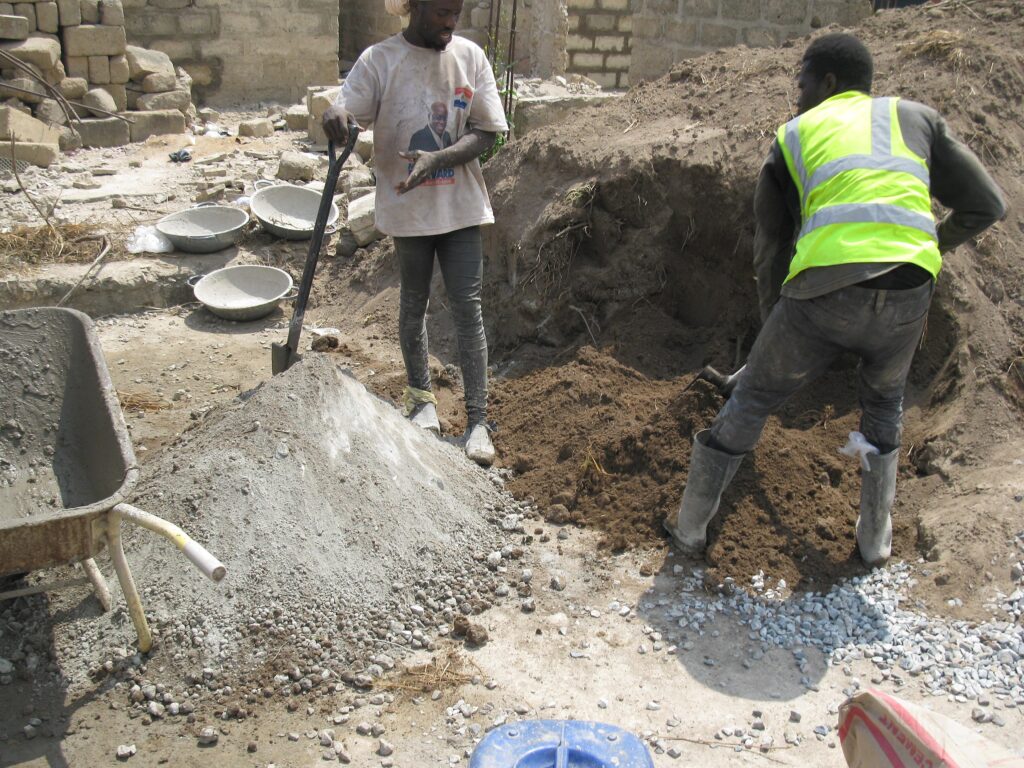A new World Bank report has highlighted a persistent challenge in Ghana: translating economic gains into meaningful job opportunities for its youth population.
The report, titled “Ghana 9th Economic Update: Addressing Labor Market Challenges and Opportunities in Ghana’s Economic Landscape,” released in June, paints a picture of an economy “running on a treadmill” — advancing in growth metrics but struggling to create quality jobs.
A Resilient Recovery Amid Fiscal Strains
Ghana’s GDP surged to 5.7 percent last year, up from 3.1 percent in 2023, driven by a revival in the industrial sector, including mining and construction, and steady services growth.
Non-oil GDP climbed to 6 percent, signaling diversification efforts. In the first quarter of this year, growth held strong at 5.3 percent, bolstered by agriculture and services, though industry faced headwinds from contractions in oil and gas.
This rebound comes after severe imbalances in 2022, when public debt hit 92.7 percent of GDP and inflation topped 50 percent. Under a $3 billion Extended Credit Facility from the International Monetary Fund, Ghana has restructured about 95 percent of its debt, reducing the ratio to 70.5 percent by the end of 2024.
Inflation has cooled dramatically, dropping to 13.7 percent by June from 22.9 percent last year, thanks to tighter monetary policy and a strengthening cedi.
Yet, fiscal challenges loomed large in 2024, an election year. The deficit widened to 7.7 percent of GDP due to revenue shortfalls and unplanned spending, including election-related expenditures estimated at 4.2 percent of GDP.
Provisional data from the first half of 2025 shows improvement, with a positive primary balance achieved through expenditure cuts.
The external sector provided a bright spot, with a current account surplus fueled by gold and oil exports, remittances, and foreign direct investment. Reserves climbed to $6.4 billion, covering 2.6 months of imports, and exceeded three months by early 2025.

Poverty rates, however, reflect the uneven recovery. Using the $3-a-day line, poverty rose to 40 percent in 2023 amid inflation shocks but dipped to 39.6 percent last year.
At the lower-middle-income threshold of $4.20 a day, it remains stubbornly high at 57.2 percent.
Growth Without Opportunity
At the heart of the report is Ghana’s labor market, where economic progress has failed to generate sufficient employment.
Between 2012 and 2023, the working-age population swelled by 2.7 million, but net jobs increased by just 250,000. Labor force participation fell from 72 percent to 68 percent, with youth rates plummeting from 62 percent to 41 percent.
The economy’s reliance on capital-intensive sectors like mining and oil has created a “missing middle” of mid-productivity jobs.

High-productivity areas employ few workers, while most jobs — 87 percent of productivity gains come from within-sector improvements — are in low-productivity informal sectors.
Structural transformation has stalled; agriculture still employs a third of the workforce, and shifts to services often mean lower productivity.
Five key challenges stand out:
- Insufficient Jobs for a Growing Workforce: Youth bulge projected to add 1.6 million by 2035, risking out-migration.
- Weak Demand in Productive Sectors: Manufacturing and services lag, with untapped export potential in textiles, electronics, and chemicals. Infrastructure gaps and low credit (10 percent of GDP) hinder private investment.
- Education-Job Mismatch: High-quality jobs (formal or high-skilled) dropped to 13 percent of employment. Returns to tertiary education fell from 70 percent to 55 percent premium over basic schooling.
- High Mobility, Low Progression: 40 percent of workers changed jobs from 2022 to 2023, but moves were often lateral or downward, especially for less-educated, youth, and women.
- Gender Gaps: Women cluster in informal self-employment (57 percent), earning less with persistent wage disparities.
Internal migration to secondary cities like Kumasi and Tamale offers some relief, absorbing rural job seekers fleeing agricultural instability, but most end up in informal roles.

Outlook and Policy Imperatives
The World Bank forecasts growth slowing to 3.9% this year due to fiscal tightening, before returning to 5% medium-term.
Inflation is expected to ease to 8% by 2028, with fiscal deficits narrowing. Risks include debt delays, state-owned enterprise losses (e.g., in energy and cocoa), climate shocks, and global trade tensions.
Under the new administration, which secured a parliamentary majority, reforms are gaining traction. Amendments to public financial management laws introduce fiscal rules, while energy sector overhauls aim for private participation.

The report calls for a multi-pronged agenda: short-term fiscal discipline and bank recapitalization; medium-term revenue strategies and SOE reforms; long-term investments in infrastructure via public-private partnerships, digital economy, and climate adaptation.
Agriculture productivity boosts, like irrigation for rice and tomatoes, could create thousands of jobs, particularly for women.
This article was edited with AI and reviewed by human editors



